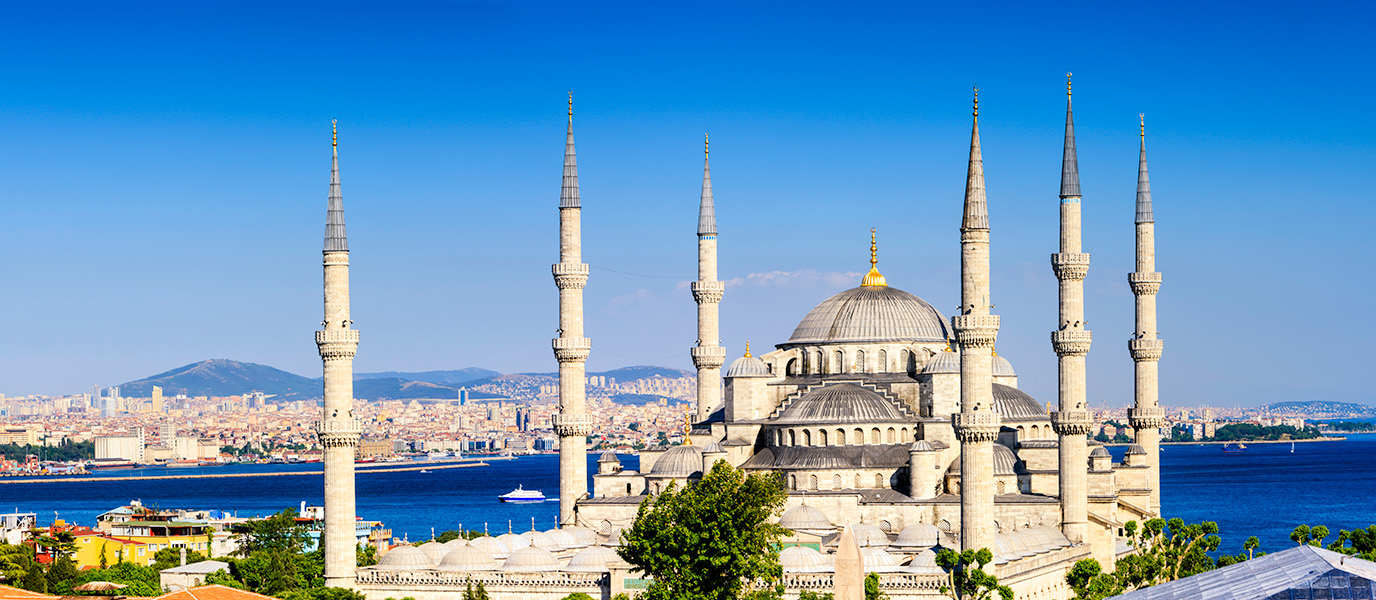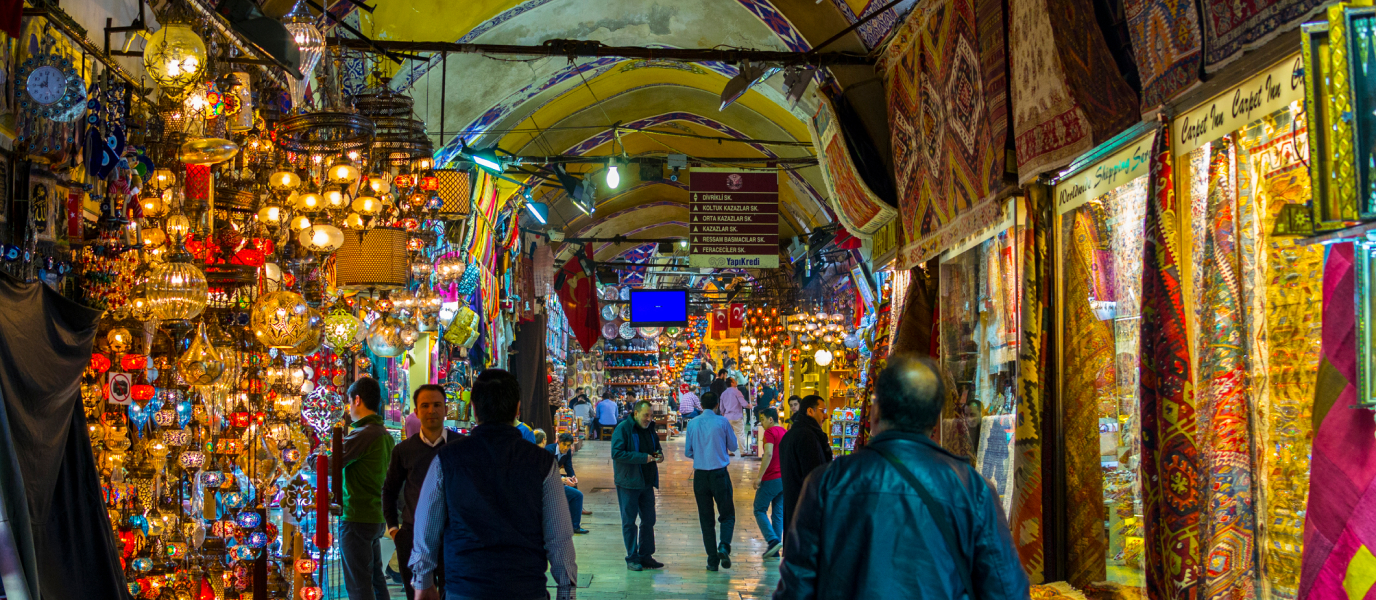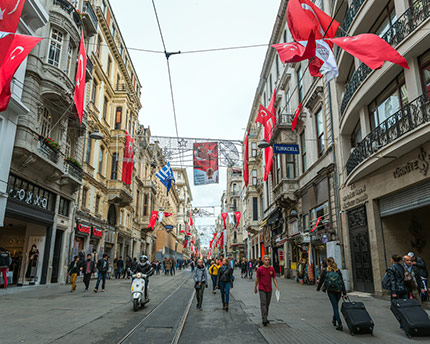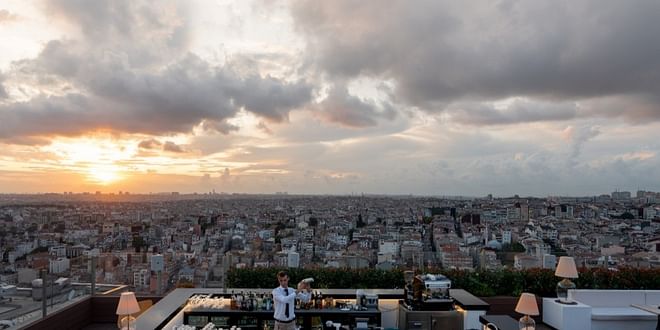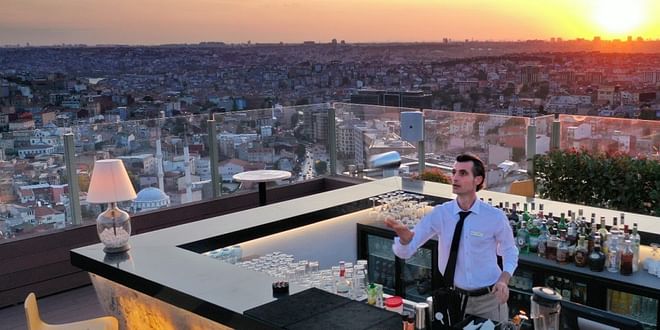It is said that, when Shah Jahan of India ordered a white marble mausoleum inlaid with precious stones (the Taj Mahal) to be built for his wife, he also planned to construct one for himself on the opposite bank of the Ganges. The second mausoleum, which would have been built from black marble, was never built. Something similar occurred with the Blue Mosque: it was built in front of the Hagia Sophia to match and outdo its grandeur and in order for them to be united forever more.
The Blue Mosque, ordered by the sultan Ahmed I was not a gift of love, however, nor was it built to mark anything important. Its construction incurred disproportionate costs for the state’s coffers. 21,043 tiles give the interior its distinctive blue colour, and over 250 stained glass windows made in Venice, with inlaid precious stones, fill it with light. The final result is remarkable: a turquoise and sky blue ambience with a constellation of geometric shapes and floral motifs covering the inside. This is the true reason for its fame and splendour and it is from this bright colour that it takes its name.
The külliye, or complex, houses the tomb of Ahmed I, a madrasa and a hospice. A portico courtyard with a hexagonal fountain for ablutions rounds off the construction, while six minarets (a number that would cause a fair few problems) complete its exterior. In building it, Ahmed I was immortalised not for his victories and conquests but for the Blue Mosque.
The history of the Blue Mosque: the immortal dream of Ahmed I
The creation of the Blue Mosque, the great project of the sultan Ahmed I, was not lacking in problems. Half a century before, the Ottoman Empire of Suleiman the Magnificent had come to the end of its expansion and conquests and, although no-one suspected it, it would never come to emulate those years of splendour again.
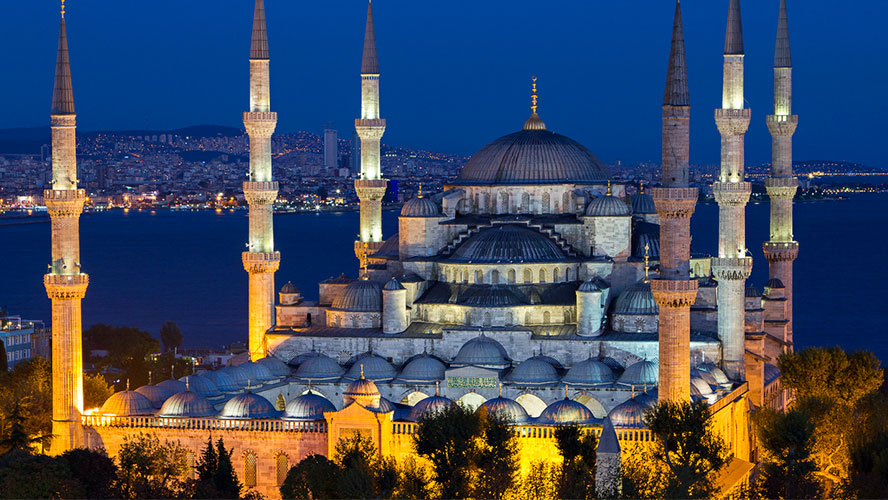
In 1606, with Ahmed having ascended the throne, the Thirteen Years’ War between the Ottoman Empire and Austria-Hungary came to and end with the Peace of Zsitvatorok. The conflict had been costly and ineffective. Meanwhile, a long way from Europe, the sultan had maintained another conflict since the beginning of his reign, in 1603, with the Persian Empire. From then, things got even worse: in 1618 definitive peace was reached through which the Ottomans lost a large part of the Caucasus.
There was nothing to celebrate, but yet the Blue Mosque was ordered to be built by Ahmed I between 1609 and 1616. It would be the first mosque to be built in 40 years and the first of others that he planned for the future. The mosque was built next to the Hagia Sophia and the hippodrome, on the site of the Great Palace of the Byzantine emperors. Up high, presiding over two seas and two continents, it dominates the the city’s southern skyline.
Ironically, the Blue Mosque, which gave Ahmed I immortal fame, also brought him down a ‘path of bitterness’. Ulamas, the guardians, transmitters and interpreters of the laws of Islam, did not overlook the fact that the building’s tremendous cost was being covered by the state’s coffers and not a military victory. The public thought the same way, believing it to be an undeserved vanity project for a sultan who had not achieved a great deal.
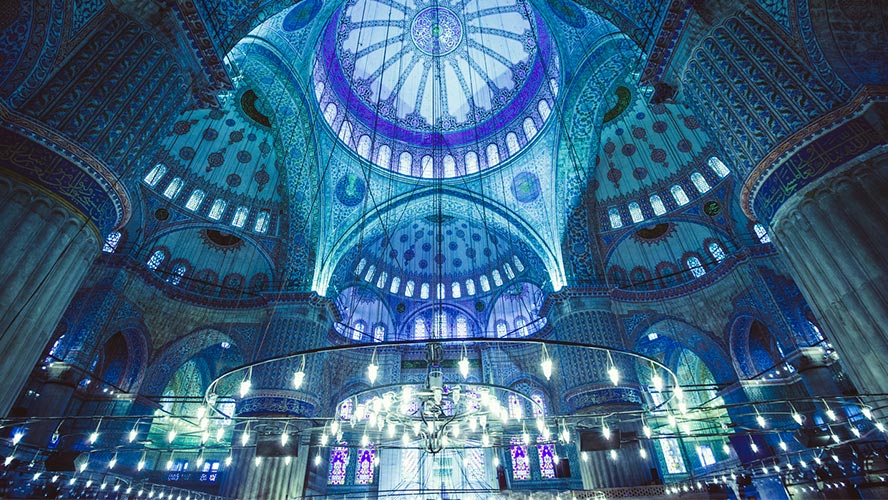
However, the problems that the monarch had to face due to his beloved Blue Mosque went much further than this, from the number of minarets that were built to the quality of the tiles. Not only did Ahmed I order that all production of Nicea or Iznik tiles be assigned to his project, he also set fixed prices per tile which were maintained throughout the mosque’s construction. This meant that the last batch was lower in quality than the first, since prices for the rest of the market had risen. Ahmed I was always adamant, however, that all of this was a small price to pay for ensuring a place in history.
The Blue Mosque, great beauty on the inside and outside
Ahmed I commissioned the architect Mehmet Ağa to design the Blue Mosque. It was to be situated in front of the Hagia Sophia, by way of a form of competition. In terms of its style, not only does it represent the culmination of the classical period of Ottoman architecture, but it also incorporates features of Byzantine and classic Islamic architecture. Somehow or other, the mosque of Ahmed I sought to oppose and outdo the quintessential place of worship of the Byzantine Empire.
Mehmet decided to follow the doctrines of his teacher, the architect Sinan, responsible for constructions such as the bridge in Mostar and, oddly enough, for the designs incorporated into the Taj Mahal. These doctrines are easily guessed: colossal, dazzling buildings brimming with splendour and riches. The Hagia Sophia, on the other side of the charming garden that separates them, is almost half the size of the Blue Mosque. Its silhouette features six minarets, more than any other mosque in Istanbul. At the time, this decision would have unforeseen but very serious consequences.
From the outside, the Blue Mosque’s domes and semi-domes gradually increase in size the closer they are to the enormous central dome. In the same way, the tiles in the interior become more elaborate the higher up the walls they are, before erupting into fervent floral and geometric patterns brimming with colour and radiance.
This lavish, opulent decoration is undoubtedly the great attraction of this colossal mosque. Thousands of hand-painted blue tiles, intricate geometric designs, pomegranates, floral arrangements, over 50 tulip flowers… all decorated in bright colours, with a light that bathes the space in cascades before fading away in the dome ceilings.

The convergence of the mosaics, the dazzling, colourful stained glass windows from Venice and the light of the palatial lamps creates an underwater, celestial atmosphere. On the walls of the mosque, verses of the Koran appear one after the other, entangled in the stylised calligraphy of Seyyid Kasim Gubari. Meanwhile, the mihrab, where the Koran is situated and which points towards Mecca, is gracefully carved in marble, surrounded by windows and inlaid ceramic. Finally, the mimbar, or pulpit, from where the imam leads prayer, rises up like a golden staircase allowing worshippers to follow his words from up high.
Interesting facts and tips
The soft, blueish light that floats above the Blue Mosque conceals many more mysteries than it might seem at first glance. We recommend asking questions and doing your own investigation but, just in case, here is a small taster:
- The six minarets that Ahmed ordered to be built flanking the Blue Mosque drew sharp criticism from followers of Islam, since only Mecca, the most sacred of all mosques, had six. As a result, the sultan had no choice but to then add a seventh minaret to the great temple.
- The reason behind the decision to build six minarets is even more unusual. According to legend, the sultan requested ‘gold minarets’, which was misheard as ‘six minarets’, since the words sound very similar. And so, a small difference in pronunciation ended up determining the style of one of Islam’s most important sites.
- When Ahmed I ascended to the throne, one of the first things he abolished was royal fatricide, a traditional Ottoman custom whereby all the brothers of the new ruler were executed.
- In November 2006, Pope Benedict XVI visited the Blue Mosque, the second papal visit in history to a Muslim place of worship. In doing so, it was hoped that stronger ties between both communities would be created.
Finally, it is perhaps worth remembering that the Blue Mosque is still a functioning temple. Therefore, certain recommendations should be followed when entering the complex, such as covering up your body and, in the case of women, your hair. You should also bear in mind that the interior is given over to praying five times a day. For this reason you may have to wait a short while at times until the ceremonies have finished.
Shows, activities and tours of Istanbul’s Blue Mosque
In summer, from May to September, the outside of the Blue Mosque and the Hagia Sophia play host to a spectacular night-time light and sound show. It begins at around 9 p.m. in the surrounding area of Sultanahmet square and usually takes place every day in a different language, so be sure to get more information beforehand from a tourist information office.





























































